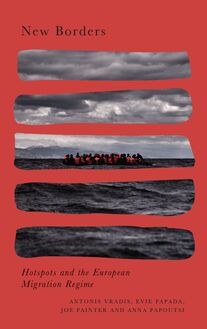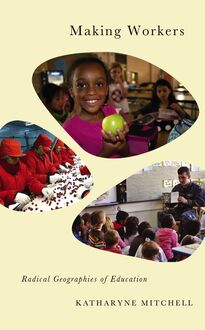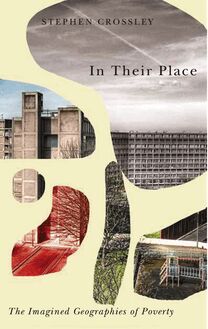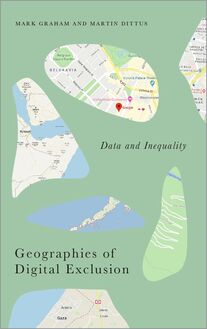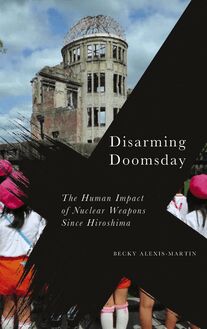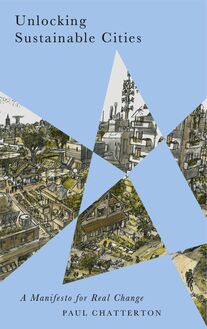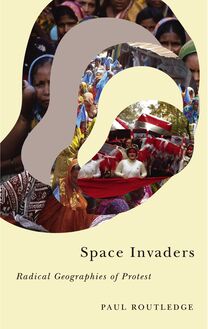-
 Univers
Univers
-
 Ebooks
Ebooks
-
 Livres audio
Livres audio
-
 Presse
Presse
-
 Podcasts
Podcasts
-
 BD
BD
-
 Documents
Documents
-
- Cours
- Révisions
- Ressources pédagogiques
- Sciences de l’éducation
- Manuels scolaires
- Langues
- Travaux de classe
- Annales de BEP
- Etudes supérieures
- Maternelle et primaire
- Fiches de lecture
- Orientation scolaire
- Méthodologie
- Corrigés de devoir
- Annales d’examens et concours
- Annales du bac
- Annales du brevet
- Rapports de stage
La lecture à portée de main
Vous pourrez modifier la taille du texte de cet ouvrage
Découvre YouScribe en t'inscrivant gratuitement
Je m'inscrisDécouvre YouScribe en t'inscrivant gratuitement
Je m'inscrisEn savoir plus
Vous pourrez modifier la taille du texte de cet ouvrage
En savoir plus

Description
***Winner of the L.H.M. Ling Outstanding First Book Prize 2020***
***Shortlisted for the Bread and Roses Award 2020***
Since the first atomic bomb exploded over Hiroshima, the history of nuclear warfare has been tangled with the spaces and places of scientific research and weapons testing, armament and disarmament, pacifism and proliferation. Nuclear geography gives us the tools to understand these events, and the extraordinary human cost of nuclear weapons.
Disarming Doomsday explores the secret history of nuclear weapons by studying the places they build and tear apart, from Los Alamos to Hiroshima. It looks at the legacy of nuclear imperialism from weapons testing on Christmas Island and across the South Pacific, as well as the lasting harm this has caused to indigenous communities and the soldiers that conducted the tests.
For the first time, these complex geographies are tied together. Disarming Doomsday takes us forward, describing how geographers and geotechnology continue to shape nuclear war, and, perhaps, help to prevent it.
List of Figures and Tables
Series Preface
Acknowledgements
1. The Radical Geography of Nuclear Warfare
2. A Secret History
3. The Mystery of the X-ray Hands
4. After Nuclear Imperialism
5. After Nuclear War
6. Strange Cartographies and War Games
7. Spaces of Irregularity
8. Spaces of Peace
9. Future War Zones
Notes
Index
Sujets
Informations
| Publié par | Pluto Press |
| Date de parution | 20 mai 2019 |
| Nombre de lectures | 0 |
| EAN13 | 9781786804396 |
| Langue | English |
| Poids de l'ouvrage | 8 Mo |
Informations légales : prix de location à la page 0,1350€. Cette information est donnée uniquement à titre indicatif conformément à la législation en vigueur.
Extrait
Disarming Doomsday
Radical Geography
Series Editors:
Danny Dorling, Matthew T. Huber and Jenny Pickerill Former editor: Kate Derickson
Also available:
Unlocking Sustainable Cities:
A Manifesto for Real Change
Paul Chatterton
In Their Place:
The Imagined Geographies of Poverty
Stephen Crossley
Making Workers:
Radical Geographies of Education
Katharyne Mitchell
Space Invaders:
Radical Geographies of Protest
Paul Routledge
New Borders:
Migration, Hotspots and the European Superstate
Antonis Vradis, Evie Papada, Joe Painter and Anna Papoutsi
Disarming Doomsday
The Human Impact of Nuclear Weapons since Hiroshima
Becky Alexis-Martin
First published 2019 by Pluto Press
345 Archway Road, London N6 5AA
www.plutobooks.com
Copyright Becky Alexis-Martin 2019
The right of Becky Alexis-Martin to be identified as the author of this work has been asserted by her in accordance with the Copyright, Designs and Patents Act 1988.
British Library Cataloguing in Publication Data
A catalogue record for this book is available from the British Library
ISBN 978 0 7453 3921 4 Hardback
ISBN 978 0 7453 3920 7 Paperback
ISBN 978 1 7868 0438 9 PDF eBook
ISBN 978 1 7868 0440 2 Kindle eBook
ISBN 978 1 7868 0439 6 EPUB eBook
This book is printed on paper suitable for recycling and made from fully managed and sustained forest sources. Logging, pulping and manufacturing processes are expected to conform to the environmental standards of the country of origin.
Typeset by Stanford DTP Services, Northampton, England
Simultaneously printed in the United Kingdom and United States of America
Contents
List of Figures and Tables
Series Preface
Acknowledgements
1 The Radical Geography of Nuclear Warfare
2 A Secret History
3 The Mystery of the X-ray Hands
4 After Nuclear Imperialism
5 After Nuclear War
6 Strange Cartographies and War Games
7 Spaces of Irregularity
8 Spaces of Peace
9 Future War Zones
Notes
Index
List of Figures and Tables
FIGURES
2.1 US military damage maps produced in 1946 demonstrate the extent of damage to Hiroshima and Nagasaki 21
2.2 Labourers working on the restoration of Hiroshima s Aioi Bridge in 1949
2.3 Los Alamos, a place of discoveries and secrets
2.4 Public incentives not to investigate the A-bomb dome too closely
2.5 Some of the Hiroshima Society of Patriots protesting outside the Peace Park on Peace Day, 6 August. They did not like me as much as this photo suggests
3.1 Young soldiers hanging out on Christmas Island
3.2 The Chairmen of the French and British atomic veterans associations rekindling the flame under the Arc de Triomphe, Paris
5.1 The current public geography of LANL reveals little about this place
TABLES
3.1 The UK nuclear tests undertaken during the atmospheric testing series, including numbers of participants for each operation
7.1 Nuclear defence treaties: past and present (nuclear-free treaties highlighted in bold)
Series Preface
The Radical Geography series consists of accessible books which use geographical perspectives to understand issues of social and political concern. These short books include critiques of existing government policies and alternatives to staid ways of thinking about our societies. They feature stories of radical social and political activism, guides to achieving change, and arguments about why we need to think differently on many contemporary issues if we are to live better together on this planet.
A geographical perspective involves seeing the connections within and between places, as well as considering the role of space and scale to develop a new and better understanding of current problems. Written largely by academic geographers, books in the series deliberately target issues of political, environmental and social concern. The series showcases clear explications of geographical approaches to social problems, and it has a particular interest in action currently being undertaken to achieve positive change that is radical, achievable, real and relevant.
The target audience ranges from undergraduates to experienced scholars, as well as from activists to conventional policy makers, but these books are also for people interested in the world who do not already have a radical outlook and who want to be engaged and informed by a short, well written and thought-provoking book.
Danny Dorling, Matthew T. Huber and Jenny Pickerill Series Editors
Acknowledgements
This book is dedicated to my PhD supervisor David Martin. Thank you for everything.
I have deployed
the nukes
that were in
the stockpile
and which
you were probably
saving
for arms control.
Forgive me
I was capricious
So rash
and so bold.
(Becky Alexis-Martin after William Carlos Williams, 2018)
1 The Radical Geography of Nuclear Warfare
What the map cuts up, the story cuts across.
- Michel de Certeau 1
Nuclear warfare is geographically distinct from other forms of warfare. It can shrink space and time to cause rapid mass destruction, reducing dependence on the operational military geographies and planned time accounting for distance and terrain. 2 Nuclear warfare is also a phenomenon of blurred boundaries. It is everywhere and nowhere, it transcends war and peace, it amalgamates war zone and homeland, and it merges the real and virtual. 3, 4
Nuclear warfare is bounded by geography, there are multiple elements that make up the assemblages of nuclear war, consisting of many different landscapes, geotechnologies, zones, bodies and communities. 5 The processes that surround the nuclear military industrial establishment, from nuclear weapon design to deployment, are inherently geographical in nature. The geographies of nuclear warfare include the geopolitics of nuclear strategy, and explore the fractured internationalism of the Global North-South nuclear divide. The geographical nature of irregular nuclear warfare and state-sanctioned terrorism is explored; as is the significance of geotechnologies, including Geographical Information Systems (GIS) and Remote Sensing. The material artefacts of the nuclear military industrial complex, from bunkers to bombs, are also relevant, as is their relationship to each other according to theories of assemblage. Also significant are the places and spaces that have been left unmapped or are unmappable due to the culture of secrecy that surrounds the military industrial complex.
Understanding the radical geographies of nuclear warfare should begin with the consideration of what is left unmapped. Cartography can be an elegant resource for understanding the world but is still limited by what is shown or concealed by the map maker. Maps can be sources of epistemic injustice. Maps have been used to deny knowledge, and as a tool to disguise the presence of the secret places where nuclear weapons were developed. They can be used to hide the traces of things that history would rather forget, a fresh green veneer for the jagged surfaces of military nuclear accident. They camouflage things that were perhaps never mapped to begin with, emerging in a flurry of pollution only to subsume into re-wilded nature reserve. Once it has gone, even the ground-truthing of satellite imagery may not reveal the traces of what came before. The perpetual remapping and remaking of nuclear warfare both constitutes and is reliant upon a concerning institutional and cultural amnesia.
The birth of nuclear warfare heralded the coming of the secret city. Entire settlements came into being beyond the public domain, hidden from and by cartographers in the USA, the UK, France, China and the USSR, their sole purpose being the covert advancement of nuclear warfare technologies. For example, in 1943 an isolated nuclear defence research laboratory was established in Los Alamos, New Mexico. The Plutopia of Los Alamos was so clandestine that initially it didn t even have a name; it was referred to instead as Project Y . 6 The unmapped streets of Los Alamos had the dual benefits of providing national security by concealment, and of isolating participants from a potentially disapproving outside world. The town was not included on any formal documentation or postal mail, and the whole area was fenced off and surrounded by guards. Academics were intellectually imprisoned by the legislation that entwined the nuclear military industrial establishment, silenced by Espionage Acts and Military Secrets Acts. For scientists during the austere years of the Second World War, this echoes the discourse of Yevgeny Zamyatin s dystopian novel We , Those in paradise were given a choice: happiness without freedom, or freedom without happiness. There was no third alternative. 7 Los Alamos was designed to embody the respectable atmosphere of a campus town environment, with careful planning to demilitarise the feel of the place. Picket fences and leafy avenues created a sense of normality that encouraged scientists and their families to relocate. Excellent health care, good schools, churches and leafy parks simultaneously incentivised, suburbanised and banalised the work of scientists who were employed to create weapons of mass destruction.
Los Alamos did not occur in isolation; this was an international phenomenon. In 1958, the Chinese settlement No. 404 Factory of China National Nuclear Corporation was covertly built to refine plutonium and produce the components for nuclear weapons. The greatest number of secret cities emerged across what was then the USSR. 8 Similarly to those living in Los Alamos, residents of the USSR secret cities received privileges, such as better food, health care and quality of life. However, their freedoms were severely restricted. Secret cities have created long-term challenges for former Soviet bloc countries due to the consequences of delayed under-urbanisation. This is the way that spatial patterns of population change have been shaped by closed cities, creating population loss, socio-spatial polarisation
-
 Univers
Univers
-
 Ebooks
Ebooks
-
 Livres audio
Livres audio
-
 Presse
Presse
-
 Podcasts
Podcasts
-
 BD
BD
-
 Documents
Documents
-
Jeunesse
-
Littérature
-
Ressources professionnelles
-
Santé et bien-être
-
Savoirs
-
Education
-
Loisirs et hobbies
-
Art, musique et cinéma
-
Actualité et débat de société
-
Jeunesse
-
Littérature
-
Ressources professionnelles
-
Santé et bien-être
-
Savoirs
-
Education
-
Loisirs et hobbies
-
Art, musique et cinéma
-
Actualité et débat de société
-
Actualités
-
Lifestyle
-
Presse jeunesse
-
Presse professionnelle
-
Pratique
-
Presse sportive
-
Presse internationale
-
Culture & Médias
-
Action et Aventures
-
Science-fiction et Fantasy
-
Société
-
Jeunesse
-
Littérature
-
Ressources professionnelles
-
Santé et bien-être
-
Savoirs
-
Education
-
Loisirs et hobbies
-
Art, musique et cinéma
-
Actualité et débat de société
- Cours
- Révisions
- Ressources pédagogiques
- Sciences de l’éducation
- Manuels scolaires
- Langues
- Travaux de classe
- Annales de BEP
- Etudes supérieures
- Maternelle et primaire
- Fiches de lecture
- Orientation scolaire
- Méthodologie
- Corrigés de devoir
- Annales d’examens et concours
- Annales du bac
- Annales du brevet
- Rapports de stage
